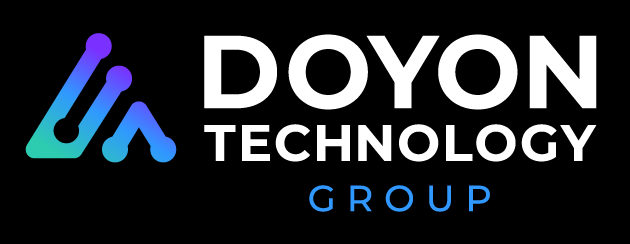Imagine your organization as a vast library, where each department maintains its own collection of books. Marketing curates customer stories, Sales chronicles transactions, and Customer Service documents client interactions. These collections, though meticulously maintained, remain isolated. They might as well be written in different languages, with no Rosetta Stone to bridge their wisdom.
Artificial intelligence is an eager scholar at this library’s door, capable of discovering profound insights, but only if it can understand the entire collection, not just scattered chapters. Each customer email, support ticket, and sales conversation add a page to your organization’s story. But without connection, their collective wisdom remains untapped.
Consider how a customer’s journey unfolds: Sarah discovers your product through marketing content, engages with your sales team, makes a purchase, then reaches out for support. If your AI can only see fragments of this story, it’s like someone walking in during the final act of a play. Any recommendations they make, however well-intentioned, lack the context that could transform good service into extraordinary understanding.
Charting Your Course: The Art of Purposeful AI
Before you begin connecting your organization’s scattered knowledge, take a moment to consider the music you want to create. Think of this stage not as a technical planning exercise but as composing a symphony. A violin sings with beauty, a trumpet calls with power, but without a score to guide them, they are simply making noise. Similarly, having access to all your data doesn’t automatically create harmony. You need a vision of the story you want to tell.
Who should help compose this vision? Bring together the truth-bearers of your company: pragmatists who understand your current boundaries, visionaries who glimpse future horizons, and leaders carrying your organization’s aspirations. Together, explore what insights might transform client relationships, what hidden patterns exist in your supply chain, which emerging trends could reshape your industry, and what constraints – technical, regulatory, and ethical – must be respected.
Organizations that succeed with AI don’t just integrate data; they integrate purpose into their AI data strategy. Before a single byte is moved, define what AI success looks like: reducing churn by 15%, increasing personalization in marketing, or cutting response times by 30%. These clear objectives anchor your data unification efforts in value and prevent them from becoming abstract projects with no real impact.
Discovering Your Data: An Organizational Archaeology
Every organization sits atop layers of digital history, like an ancient city built and rebuilt across generations. Each technological era, each departmental initiative, has left its artifacts in the strata of your information architecture. Data mapping is like organizational archaeology, blending technical precision with narrative intuition to unearth hidden stories in your digital bedrock.
Your organization’s territory holds three interconnected realms of knowledge:
- Structured data: Your official records, transaction logs, CRM databases, financial reports, are the scrolls and stone tablets of your organization, meticulously cataloged and preserved.
- Unstructured data: The vast oral history of your business, emails, PDFs, call transcripts, social media posts, is rich with untapped insights, yet remains scattered.
- Informal histories: Personal spreadsheets, shadow IT systems, legacy software, these often-overlooked records hold valuable knowledge hidden at the margins of official data stores.
Your first task is to inventory and assess these sources. Many organizations discover that data silos aren’t just technical—they’re cultural. Different teams often control access like fiefdoms, hesitant to share their carefully curated knowledge. Successful integration requires negotiating access as much as building infrastructure.
This is where AI-driven data discovery and classification tools come in. Solutions like Collibra, Alation, and Microsoft Purview can scan cloud drives, legacy systems, and structured databases to identify and classify forgotten or siloed data – a critical step before integration begins. These tools help automate data governance, ensuring that businesses not only connect their knowledge but also manage it with precision and compliance.
Bridging Worlds: The Architecture of Connection
Throughout history, the greatest bridges have transformed isolated communities into vibrant networks of shared culture. The same potential lives in the architecture that connects your organization’s knowledge. This isn’t merely about moving information, it’s about creating pathways for insight to flow as naturally as conversation, for stories to weave together, and for collective wisdom to emerge from individual experiences.
Organizations typically choose one of three integration architectures as part of an AI data strategy:
- Data Warehouses act as grand central terminals, structured for speed and efficiency, ideal for reporting and business intelligence.
- Data Lakes are natural reservoirs, capturing structured and unstructured data in its raw form, making them fertile ground for AI-driven insights.
- Lakehouses combine the strengths of both, allowing structured querying while preserving unstructured data for deep learning.
Picking the right architecture matters because it shapes how your organization connects insights. If you rely on real-time personalization, like suggesting products or managing healthcare and financial data, a Lakehouse is ideal because it efficiently handles both structured queries and live data streams. For industries that demand strict compliance, such as healthcare, finance, or government, Data Warehouses offer the built-in governance and structure necessary for secure, trusted reporting. Meanwhile, if you’re pursuing innovative AI applications, a Data Lake provides the open flexibility you need to experiment with diverse, unstructured data.
Ultimately, your choice of architecture defines how freely insights flow, transforming isolated knowledge into connected intelligence, bridging individual experiences into shared organizational wisdom.
The Alchemy of Clean Data: Preparing for AI’s Insights
In candlelit laboratories, medieval alchemists pursued a dream: transform base materials into something precious. Today’s data preparation is very similar to that ancient quest. Our lead is raw information, and our gold is the intelligence that reveals hidden truths.
Like those early experimenters, we’ve learned that ingredient quality fundamentally shapes what’s possible. Duplicate records result in bad recommendations. Misaligned schemas distort AI insights. Unlabeled unstructured data remains invisible to models, like a book whose pages no one can read.
This is where architectural decisions about data transformation become crucial. Modern organizations increasingly favor ELT (Extract, Load, Transform) approaches over traditional ETL, allowing data to be ingested first, then transformed dynamically as AI needs evolve. Metadata tagging adds meaning to raw content. Deduplication ensures clarity of signal. Format standardization creates a common language for disparate systems to communicate.
These technical processes act as translations, turning your organization’s many data dialects into a language AI can understand. As organizations build powerful AI-driven data ecosystems, the ability to unify information must be matched by the responsibility to handle it ethically. Data isn’t just a resource, it represents real people, real experiences, and real trust
Trust as Technology: The Ethics of Connected Data
In our rush to unify data, we sometimes forget that each data point represents a moment of human trust. Every customer who shares their story, every employee who documents their work, they’re not just creating records, they’re engaging in acts of faith.
Your connected data infrastructure is a living library of human experience. Knowledge should flow freely, but it must be handled with care and respect. Data sovereignty laws like GDPR and CCPA dictate where and how information can be stored, reflecting cultural and legal expectations about privacy. Access control policies, from role-based frameworks to zero-trust architectures, ensure sensitive insights don’t fall into the wrong hands. Bias audits in AI models prevent the reinforcement of existing inequalities, making sure technology doesn’t amplify historical injustices.
An effective AI strategy optimizes not only for intelligence but for integrity—ensuring that connected data leads to fairness, transparency, and accountability. In this way, the technical infrastructure of data becomes inseparable from the ethical infrastructure of trust. The most powerful AI implementations recognize that “can we?” must always be tempered with “should we?”—that the ability to connect information comes with the responsibility to protect the human experiences it represents.
The Symphony of Success: When AI and Data Dance Together
Imagine the moment when an orchestra first comes together in perfect harmony, when individual musicians, each skilled in their own right, suddenly transcend their separate melodies to create something magical. This is what happens when an organization’s knowledge truly unifies, when artificial intelligence gains the ability to see and understand the full symphony of human experience flowing through your enterprise.
The organizations that will thrive in this new era won’t be the ones with the most data, but the ones with the most connected intelligence. AI success is not about merely accumulating data but about weaving disparate knowledge into a cohesive, insightful, and ethical system of decision-making.
Your data is already telling a story. The real question is: Will your AI hear the whole tale or just scattered echoes?
If you’re not sure whether your organization can tackle this alone, or if a strategic partner could accelerate your success, it’s time to decide. The right data strategy won’t just support AI; it will define your competitive edge. Which path will you take?
Doyon Technology Group is here to help. Connect with us today if you’re ready to define your AI data strategy.
––––––
About the Author

Greg Starling serves as the Head of Emerging Technology for Doyon Technology Group. He has been a thought leader for the past twenty years, focusing on technology trends, and has contributed to published articles in Forbes, Wired, Inc., Mashable, and Entrepreneur magazines. He holds multiple patents and has been twice named as Innovator of the Year by the Journal Record. Greg also runs one of the largest AI information communities worldwide.
Doyon Technology Group (DTG), a subsidiary of Doyon, Limited, was established in 2023 in Anchorage, Alaska to manage the Doyon portfolio of technology companies: Arctic Information Technology (Arctic IT®), Arctic IT Government Solutions, and designDATA. DTG companies offer a variety of technology services including managed services, cybersecurity, and professional software implementations and support for cloud business applications.

